Talk with our local travel specialist who can help organize your trip.
Trekking In Langtang Region Of Nepal
Langtang Region is one of the nearest trekking destinations from Kathmandu. The Langtang and Helambu region is a tight knot of dramatic 6,000-7,000m high mountains (the highest peak is Langtang Lirung at 7,234m), beautiful Alpine valleys, and neatly terraced foothills just to the north of the Kathmandu Valley.
Very popular with independent trekkers, the Langtang Himalaya is one of Nepal’s main trekking regions and is perhaps the most accessible trekking area in Nepal: you could literally start walking from your Kathmandu guesthouse straight into the foothills of the Helambu region and then on up into the Langtang Himalaya (though because of traffic congestion and pollution very few people do this nowadays).
There are good trekking lodges throughout most of the range, the trails are simple to navigate, and there are extraordinary scenic and cultural varieties. All of this has meant that the Langtang region and the Helambu area have always been, alongside Everest and Annapurna, one of Nepal's big three independent trekking areas.
In April 2015, a disastrous earthquake struck the Langtang Valley and surrounding areas and caused massive damage and loss of life. The once beautiful stone wall village of Langtang was completely and utterly buried under a huge avalanche. Today all the trekking trails are fully repaired, trekking lodges are open, and – in many ways – things are back to normal.
Despite a few reminders of the devastation wrought on that April day, this is a wonderful area to trek with stirring, up-close mountain views, yak pastures, rewarding side-trips, Holy lakes, cultural interactions, easy and cheap access with no internal flights needed (or possible!) and, compared to the main Annapurna and Everest trails, relatively few other foreign trekkers.
The Langtang Himalaya and Helambu region is also an ideal trekking area for those with limited time. The shortest routes take just a week (or even slightly less), including travel time from Kathmandu. There are also innumerable ways of combining treks to cobble together exciting walks lasting several weeks.
Table of Content
Best Time To Visit Langtang Region

The weather patterns in the Langtang region and Helambu follow the classic Nepalese pattern. The dry season runs from roughly early October to late May, and the wet season (a bad time to trek) from June to September. Accordingly, the best time to trek any of the trails around the Langtang region is between October and April. But within this time frame, there is a little seasonal variation.
Overall, October to November and also March and April are the prime months. October and November offer the ideal combination of crystal clear skies, reasonable temperatures, and little chance of unexpected rain or snow. But, it’s also the busiest period. In April, flowering rhododendrons add a palette of red and orange to the slopes, but the heat is really building up at lower elevations, and the air is increasingly hazy. It can get very cold in December and January, but it remains dry and the air clear and lodges remain open, and the trails are quiet.
If you’re equipped for the cold and have a few spare days up to your sleeve in case of paths being blocked by snow, then this is a good time to trek as well. Few people trek here in the monsoon, and in general, we wouldn’t suggest you try. However, if your interest is more cultural than scenic, during the Janai Purnima festival held during the August full moon, thousands of Hindu pilgrims make their way to the holy Gosainkunda lakes to bathe.
Recommended Read: Best Time To Visit Nepal
How Should I Trek In The Langtang Region?
In the Langtang region, the Langtang Valley, Helambu, and Gosainkunda are some of the best places for independent travelers. Trail heads are cheap and easy to get too. The trails are generally clear and easy to follow. There’s plentiful cheap accommodation and places to eat, and there are just enough fellow trekkers to mean you’ll never walk alone. And because the area is so well set up for independent trekkers, that is indeed how almost everyone goes.
But, there are advantages to going on at least a semi-organized trek. The most important point is that you can explore further and higher up the Langtang Valley than a trekker reliant on a trekking lodge ever could, and so you discover some genuinely wild corners. But there are also other advantages to an organized trek.
You don’t have to worry about finding all rooms at the inn taken and having to sleep on the dining room floor (this happens quite frequently). You’ll have a permanent translator on hand and, importantly, someone who knows the trail approaching weather conditions.
Another nice plus is that you’ll have a porter or two and so won’t have to carry that overly heavy bag yourself! If you’re walking the Tamang Heritage trail, then a more organized tour is a good idea, and at the least, you should have a local guide.
Trekking Permit For Langtang Region
As with all Nepalese treks, you will require a TIMS Card. The Langtang, Gosainkunda, Ganj La and Helambu treks all enter the Langtang National Park for which there is a NRs 3000 entry charge.
The Helambu trek also enters the Shivapuri National Park, for which there is an NRs 1000 entry fee.
No restricted area permits are required for any of the treks in the Langtang Region, and, unlike in some parts of Nepal, you don’t have to trek in an organized group.
Is The Langtang Region A Dangerous Area To Trek?
As with all Nepal’s main trekking regions, the Langtang area trails are very safe areas to trek. But, there are some important exceptions and points to keep in mind.
- The high, remote, and rarely trodden Ganj-La pass that links the upper Langtang Valley with the Helambu region is dangerous. Highly experienced trekkers should only attempt it with some mountaineering experience, a knowledgeable guide, and good equipment (ropes, crampons, ice-axe).
- Altitude-related problems are common on the walk to the Gosainkunda Lakes. This is especially the case if you start your trek from Dhunche (rather than walk the Langtang Valley first and then cut across to this trek, as most people do), where the altitude gains are just too significant to be considered safe.
Where to travel next?
Get help from our travel specialists for holiday ideas that matches your interests.
How Do I Get To The Trail Heads?
Access to this area from Kathmandu couldn’t be easier. Simply hop on a bus in central Kathmandu, and by the end of the day, you’ll be in Syabrubesi (trail head for the Langtang Valley Trek and the Tamang Heritage Trail). If you’re only going to do the Gosainkunda Lakes trek, then jump down at Dhunche. If you don’t fancy the bus, tour companies can organize a transfer in a comfortable 4x4 jeep, and this would also allow you to make a short diversion of a couple of hours to the pretty hilltop village Nuwakot. For the Helambu trek, you can just hop in a taxi in Kathmandu for the short ride out of the city to the trail head at the Shivapuri Nagarjaun National Park entrance. There are no flights to any of the trail heads.
5 Best Things About Langtang Region Trekking

Although overshadowed by more famous trekking areas such as Everest and Annapurna, the Langtang range has a lot to recommend. Here’s why we think you should march towards Langtang.
Variety
The Langtang and Helambu area does it have all: traditional mountain villages, flower meadows, red pandas dozing in pine trees, rushing rivers, snowbound passes, delightful homestays, pretty farming country, and, not least, the chance to stand atop the frozen summit of a minor Himalayan peak.
Kanjin Gompa day trips
The small village of Kanjin Gompa (3,860m), at the head of the Langtang valley, might be the ‘official endpoint of the Langtang valley trek, but this is where the fun is, in truth, really starts. Numerous day and overnight trips fan out along trails from Kanjin Gompa. You can make the almost obligatory hike up to the Kyanjin Ri viewpoint (4,600m) for sensational views or a rollicking day-long adventure to the glaciers and yak pastures of the Lirung valley. A bigger challenge is the long and exhausting day trip to the Tsergo Ri viewpoint, which at 4,984m is just a smidgen under the magical 5,000m mark.
Gosainkunda Lakes
The eerie holy lake of Gosainkunda (4,400m) has a black rock sticking out of the middle of it that Hindus believe is the head of Shiva, and the lake attracts scores of Hindu pilgrims (particularly over the August full moon). Like any good pilgrimage, the trek to Gosainkunda is a challenging one involving a high pass crossing and memorable scenery. Once at the lake, there are a number of side trips to other lakes and high viewpoints.
Local Life
Helambu and the Tamang Heritage trail offer a delightful combination of mountain views, pretty villages, and, on the Tamang Heritage Trail, in particular, a real insight into local life thanks to an exciting community tourism-based initiative that sees trekkers staying as guests in the village houses and traditional dances and events being laid on. Both these treks are (for the Himalayas) at a fairly low level with little AMS risk. The Tamang Heritage Trail is an especially good family trek.
Exploration
It would be a mistake to think that just because the Langtang region has been a popular trekking area for decades that there’s no adventure left. Grab some tents and a guide and walk for a day or so further up the Langtang valley towards the Langtang glacier, and you’ll feel as if you have the Himalaya all to yourself.
Where to travel next?
Get help from our travel specialists for holiday ideas that matches your interests.
5 Best Treks In Langtang Region
Langtang Valley Trek

Langtang Valley Trek one of the short treks in Nepal and the most rewarding treks in the Langtang Region. The simple, up and down romp along the Langtang Valley takes the lucky trekker steeply upwards through deciduous and then conifer forests before emerging onto flatter ground around the edge of the tree line where the valley opens up into vast yak pastures that end in a wall of rock and glacier. The mountains here might not touch the 8000m mark, but the base to peak rises are as impressive as almost anywhere else in the Himalayas, and once you reach the last village of the valley, Kanjin Gompa, you really feel in the heart of the great mountains.
Kanjin Gompa makes a wonderful base for a number of thrilling day and overnight treks. Saunter to the summit of Kyanjin Ri (,4600m), from which it feels like you could lean out across the valley and touch the snows of giant Langtang Lirung. For an even higher thrill, make the long day to Tsergo Ri (4,984m) or explore the remote upper reaches of the Lirung Valley. Old folk in these parts still tell stories about how the uninhabited upper valley used to be home to a number of yetis! Just maybe, you’ll spot a fleeting glimpse of one! For a real ‘life experience,’ organize a good guide, pack some ropes, crampons, and ice-axes and tackle Yala Peak (5,520m) and feel as if you’re atop the world.
The valley suffered terribly in the 2015 earthquake, and the entire village of Langtang vanished under a huge avalanche. Today, reminders of the earthquake are still visible. Not least, the mountain slopes blasted clear of forest cover and the disturbing experience of crossing the rock fields that buried Langtang village. Local people, though, are resilient and pleased to be once again receiving international trekkers.
The basic trek takes eleven days, including travel time from Kathmandu, but only a fool wouldn’t add in another couple of days for side-trips from Kanjin Gompa. Afterward, most people return the way they came, but it’s possible to link up with the Langtang Gosainkunda and Helambu treks for those with more time.
This is a very good first-time Himalayan trek.
- Difficulty: Easy to Moderate. (The trail climbs quite rapidly, so there is a risk of AMS.)
- Trek Duration: 11 days
- Max. Elevation: 4,984m (Tserko Ri)
- Accommodation: Trekking lodges. Camping is required for any overnight trips beyond Kanjin Gompa.
- Start/End Point: Syabrubesi
Gosainkunda Trek
The most popular add-on to a Langtang valley trek and a fantastic short trek in its own right. This trek hauls up sharply through pine forests where red pandas are known to live (but are very rarely seen) to the holy Hindu lakes of Gosainkunda. Although you don’t come face to face with the high mountains in the same way that you do on the Langtang trek, you do get grandstand views of the Langtang and Ganesh ranges, and you have the excitement of crossing the often snowbound and quite challenging Laurebina La (4,610m).
There are a number of different approach routes to Gosainkunda. Still, for acclimatization reasons, it’s best to do the Langtang valley trek first, then from close to the teahouses of Doman (on the Langtang valley trek), cut across to Gosainkunda, and descend back to Kathmandu via the Helambu Circuit. Some people go directly to Gosainkunda from Dhunche, but the elevation gain is great, and many people get altitude sickness. Starting from Helambu and walking to Gosainkunda is a long uphill drag that also invites altitude problems.
- Difficulty: Moderate. The trail climbs quite rapidly, so there is a risk of AMS.
- Trek Duration: Minimum eight days depending on route options.
- Max. Elevation: 4,610m
- Accommodation: Fairly simple trekking lodges.
- Start/End Point: Syabrubesi/Dhunche or Sundarijal
Helambu Trek

Helambu Trek is the closest trek to Kathmandu (it starts literally from the northern outskirts) takes walkers on a fairly gentle amble through terraced fields, wild forests, flower meadows, and lots of little villages with views of mountains never far away. Despite the proximity to Kathmandu, the heyday of this once very popular trek seems to have passed, and today the trails of Helambu are fairly quiet. Although you can make an enjoyable week-long circuit (a good option for those with little time and/or trekking experience), most people chose to use Helambu either as a walk-in or out the route to Gosainkunda and the Langtang valley. The highest point reached on this trek is 3,640m, so it can be done as a mid-winter trek when higher routes might be snowed in.
- Difficulty: Easy/Moderate.
- Trek Duration: 8 days.
- Max. Elevation: 3,640m
- Accommodation: Fairly simple trekking lodges.
Tamang Heritage Trail
The Tamang Heritage Trail is a bit different from most other Nepalese mountain treks. The route has been designed as much to highlight the culture of the Tamang people who live in the Langtang region as for mountain scenery. It’s a real community project with money generated from trekkers going into local development projects and trekkers being hosted at night by local families in village houses. It’s quite likely that you will be entertained with traditional dance, local food, and lots of talking stories at some point along the trail. The trail starts from Syabrubesi and is a five to six-day loop to the northwest of the town close to the border of Tibet. Aside from the pleasure of the homestay experience, the highlights are the pretty Tamang village of Gatlang, the hot springs at Tatopani, and the fine mountain views over the Ganesh and Langtang range from Nagthali Ghyang. The highest altitude reached is 3,300m, so this is a good mid-winter trek when higher routes might be snowed in, and it suits those with limited time.
The Tamang Heritage Trail is very easily combined with the classic Langtang Valley trek. For those with more time to add in Gosainkunda and the Helambu treks to make for a truly rewarding three weeks hiking.
The Tamang Heritage Trail is better done with a local guide as part of an at least semi-organized trek (in other words with the guide and a porter or two).
- Difficulty: Easy to moderate.
- Trek Duration: 14 days.
- Max. Elevation: 3,300m
- Accommodation: Homestays.
- Start/End Point: Syabrubesi
Ganja La Pass Trek
The most challenging, dangerous trek in the Langtang region is the crossing of the high (5,106m) Ganj La pass, which links Kyanjin Gompa at the head of the Langtang valley with Tarke Ghyang on the Helambu Circuit. This is not a trek to be taken lightly, and it should only be attempted by very experienced trekkers with mountaineering experience and a good support team. You will need camping equipment, a guide who knows the route well, ropes, ice-axes, and crampons. There are no facilities along the route. Note that the pass is, at best, only open between October and November and March-May, but even during these months, it’s more often than not snow-bound and impassable. Make sure you have a backup plan in case the pass is closed. Avalanches are a very serious risk on the approach to and from the pass. Trekkers have died attempting this route in the past, and today it’s very rarely tackled.
- Difficulty: Very strenuous and dangerous.
- Trek Duration: Four days from Kyanjin Gompa.
- Max. Elevation: 5,106m
- Accommodation: Camping only.
- Start/End Point: Kyanjin Gompa/Tarke Ghyang
- Written by: Stuart Butler
Updated: Aug, 17, 2020

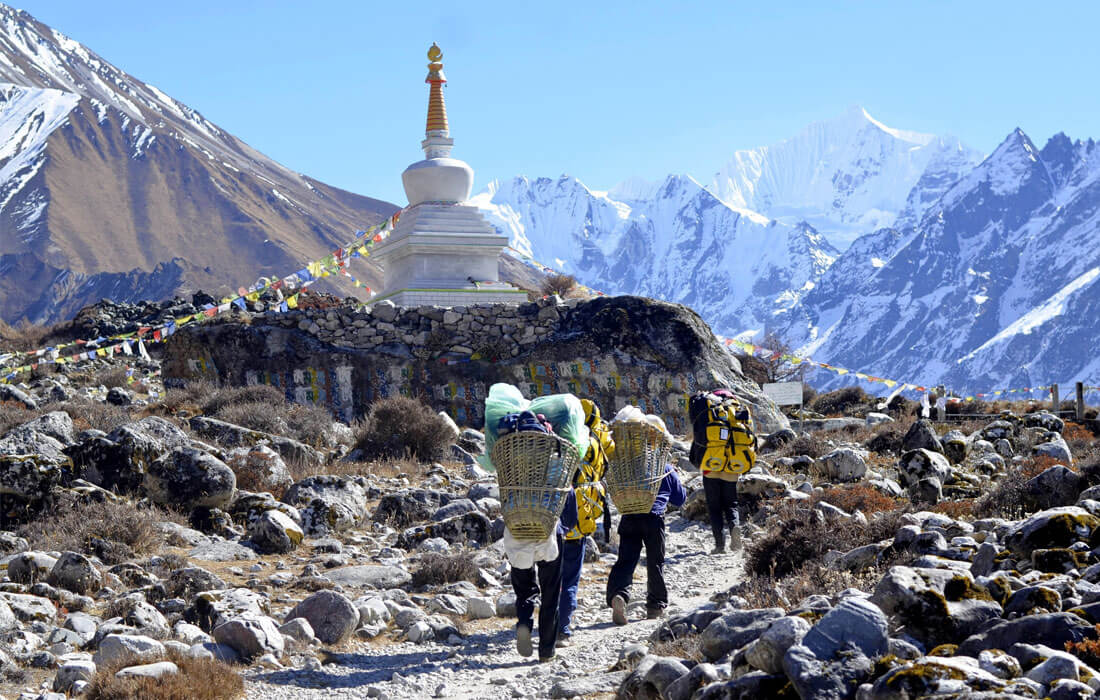

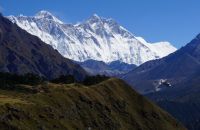
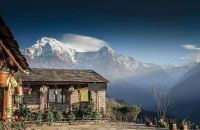
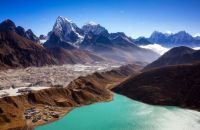
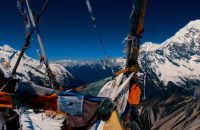
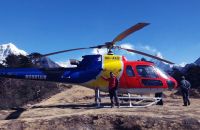
















Recent Comments
What a great article about the Langtang Tamang heritage trek. It contains all the details of the step-by-step itinerary, hotels names, maps, it will be very helpful for those planning their trip for the first time.
Langtang Valley Trek is one of the best destination at langtang region of Nepal. loved the nature in the himalaya
Really great blog about Langtang Trek